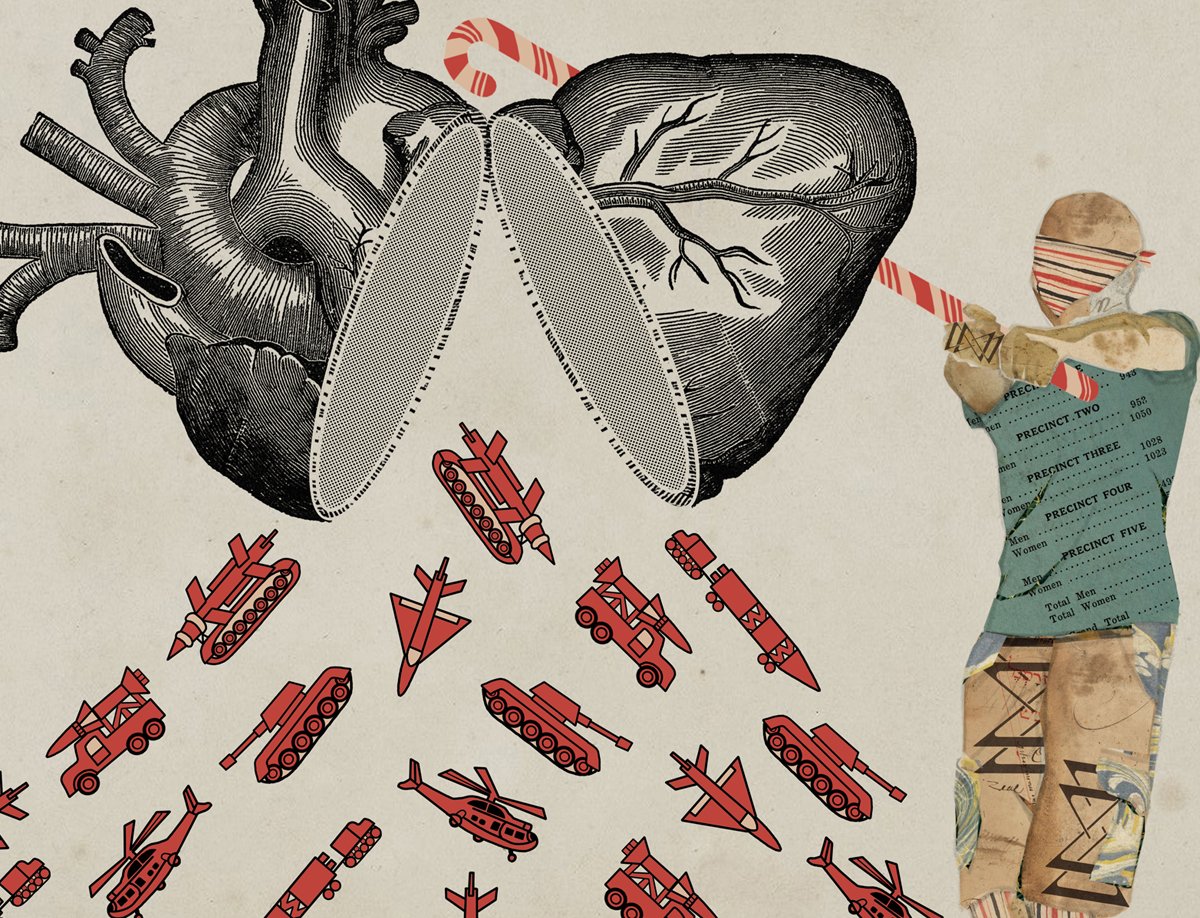“Have we raised the threshold of horror so high that nothing short of a nuclear strike qualifies as a ‘real’ war? Are we to spend the rest of our lives in this state of high alert with guns pointed at each other’s heads and fingers trembling on the trigger?”
―
“The Cherokee used to fear that taking a photo would make them lose their souls. Over exposure and desensitization is pretty close to losing one’s soul. So they were right to quite an extent.”
―
One of the favorite terms I learned in graduate school was systematic desensitization, which is also known as graduated exposure therapy, developed by Joseph Wolpe, a South African psychiatrist.
Systematic desensitization is used to help people overcome fears and anxieties.
A person can become desensitized by
- 1) identifying the cause of their fears and anxieties,
- 2) learning a coping response to deal with the cause, and
- 3) connecting the stimulus to the new response when the trigger is noticed.
The goal is to overcome the fear by gradually exposing patients to the stimulus until that stimulus can be tolerated through a process of successive approximations of the actual cause.

It always seemed to me that systematic desensitization could be an effective tool for individuals suffering from phobias or high anxiety.
I have discovered recently, however, that this tool may have negative consequences for society as a whole.
When our country is continually exposed to behaviors and decisions that should induce fear and outrage, it appears that we may become conditioned to be more and more tolerant of (or at least not surprised by) the most egregious words and hateful actions.
Instead of being paralyzed by fear caused by the heinous outbursts of elected leaders, we have become numb and indifferent no matter how offensive the act.
We have a reached a point where nothing surprises us or jolts us into action. We have been systematically desensitized to fear mongering and hate baiting.
I am using the word “we” because, independent of where we are on the political spectrum, we have all become de-sensitized to lunatic behaviors and offensive speech.
When I served in Vietnam, the Army did everything in its power to desensitize me to the horrors to which I was exposed on a daily basis.
After returning, I have spent the last 50 years attempting to sensitize myself to the conditions that created that soul-sucking mistake in the first place.
In this post, I would like to propose a solution to our current madness―we all need to acquire the skill of systematic sensitization. Webster defines sensitization as “the action or process of sensitizing; the quality or state of being sensitized.” Whereas desensitization helps people overcome their fears, sensitization helps people remain calm and clear-eyed while expressing their outrage. The goal is to develop a rational perspective in response to the challenges we face while avoiding the deleterious consequences of continuous hostility.
My point of view is that the people on the conservative side of the political spectrum have numbed themselves to horrifying words and actions, while people on the progressive side of the spectrum have weakened themselves through an endless outflow of negative energy. The two quotes at the beginning of this post summarize my sentiments beautifully.
Arundhati Roy, the author of the brilliant book, the The God of Small Things, implies that our threshold of horror has become so high that nothing short of a nuclear strike gets our attention. And Sabine Shah, author of Flowers Don’t Cry, suggests that overexposure and desensitization are pretty close to losing one’s soul.
Shah astutely raises the central questions:
- Have we lost our soul?
- Can we rediscover it?
I definitely think, as a nation, we have lost our soul, and I’m not particularly optimistic that it’s recoverable.
But we have to give it a shot.
In my book, Creating Organizational Soul, I suggest a variety of examples in which organizations were able to create a positive and productive work environment. In the book, I provided tools for measuring organizational soul and soulful conditions. I also proposed methods for assessing leadership and engaging in meaningful goal-setting and performance conversations.
Based on my experience with hundreds of organizations, I know it’s possible to create humane, innovative, and productive work environments. Many of those lessons could be applied to our political environment, but I would like to focus on what we can do as individuals.
Here are 3 steps to consider as an AID for systematically becoming more sensitized.
- Assess where you are on the continuum from permanently numbed to continually enraged with calm, clear, open, and constructively engaged in the middle.
- Identify where you want to be on the continuum.
- Develop a plan to become calmer, clearer, and more open to different points of view.
1. Assess:
Yes, it starts with an impartial and objective assessment of your own state of mind. Are you constantly agitated, distressed, and despondent? Or are you resting comfortably in the safety of your own bubble with no intention of opening up to real facts and research? How often are you feeling calm, clear, and committed to change? What is your level of sensitivity to your own stress and the stress of others?
| Permanently Numb | Calm, Clear, Open, Engaged | Continually Enraged |
Identify:
Once you have made your assessment, the next step is to identify where you want to be on the continuum. Would you prefer to remain willfully ignorant and permanently numb? Or do you want to continue to wallow in your negativity? How sensitive are you to where you are in any moment and to any movement in one direction or the other?
Develop:
After you know where you are and where you want to be, the last step is to develop a plan for change. What are you going to do to become more committed to change? What skills or capabilities will you need to make a real difference in your own life and in your family and community? What cultural barriers could get in your way? How can you be more systematic in your efforts to grow and change?
I know I need to be more systematic in developing my sensitivity. I need to notice the symptoms when I’m stuck in a negative funk more quickly and return to a peaceful state of mind. Exercise and meditation help. So does a little wine! I’m a big fan of Calm Clarity, Energy’s Way, and Qi Gong. I’ve discussed all of those skills in previous posts. I read the New York Times every morning and watch PBS at night, but I could seek out different sources of news―although I must admit that listening to Fox News sends me into a rage. I have found that the best anti-numbing formula is to practice meditation and spend time with my family. Deep connections help me stay calm and there is nothing like the joy of hugging your grandchild to inoculate you to the painful news in the world.
I guess the key is to know when and how to sensitize AND desensitize.
I know what I don’t want: I don’t want to be numb, closed, or willfully ignorant.
I don’t want to let fear and hate dominate my spirit. I don’t want hostility to poison my soul.
And I don’t want to send negativity into the world.
I also know what I want: I want to feel more loving and joyful. I want to be engaged in a constructive way. And I want to develop and nurture my soul.
I want to maintain my equanimity in the face of turmoil and crisis.
And I know what I need: I need to be more patient, gentle, and sensitive. I need to live life with an easy flow and grace. I need to stay open to possibilities.
In closing, let’s go back to the beginning. May we all listen to the wisdom of Arundhati Roy and Sabine Shah: May we lower our threshold of what horrifies us (notice our de-sensitization) and be more sensitive to our souls and the souls of others (increase our sensitization). May it be so.




